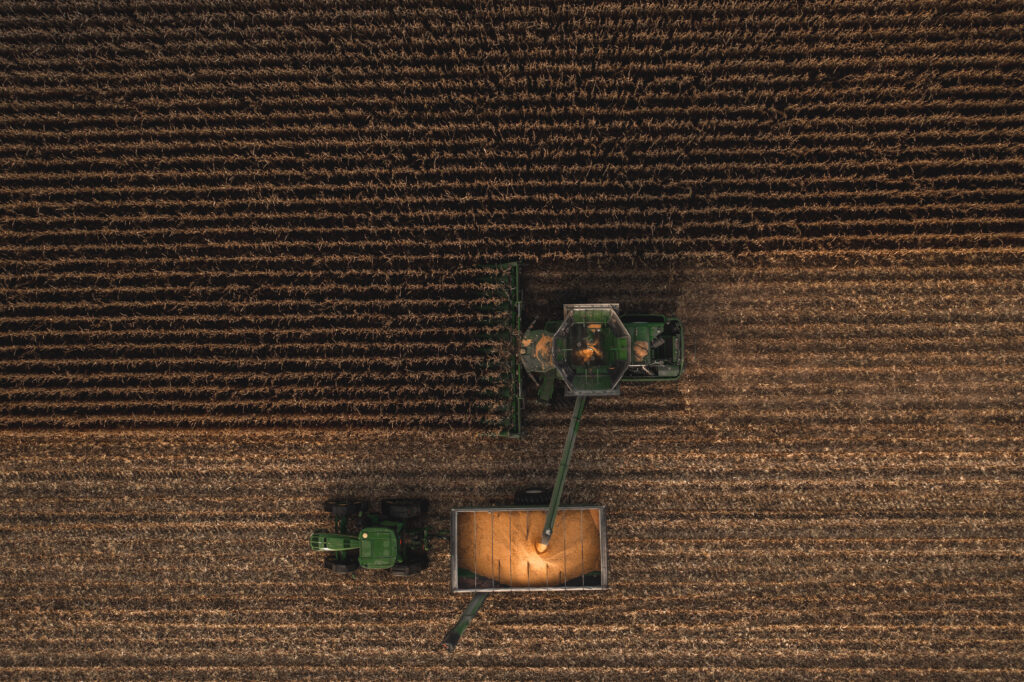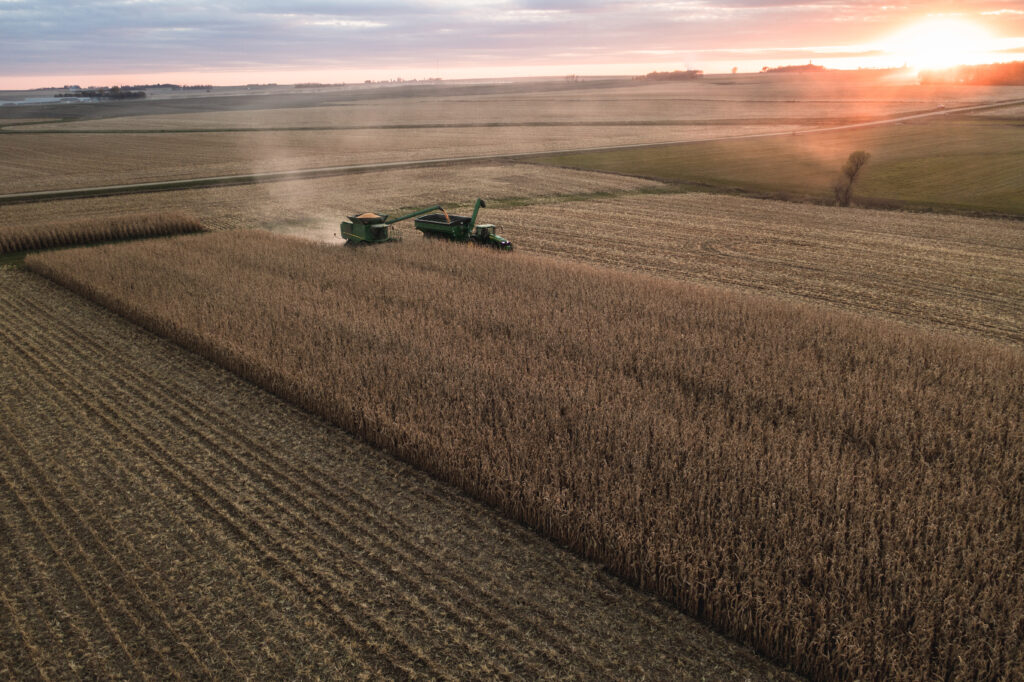The Gevo Farm-to-Flight Program is built around Gevo’s plans to make sustainable aviation fuel with sustainably grown corn. By using feedstock grown on farms that use regenerative agriculture and sustainable farming techniques, Gevo starts the wheels turning on its circular economy. The idea is to produce aviation fuel that uses carbon that’s already in the atmosphere, rather than fossil carbon that is pumped out of the ground or dug up.
The corn we use relies on photosynthesis to grow and draws carbon dioxide from the atmosphere, using the sun’s energy. In our business system, sustainably grown corn is a keystone part of the equation, and that’s because of the efficiency that it introduces to the circular economy. When grown in the prescribed ways, corn adds to the soil of farmers’ fields, adding organic matter and nutrients, enhancing the soil’s ability to retain moisture, and providing a foundation for crops that simultaneously yield more bushels per acre and put carbon back into the ground.

Gevo has received a grant of up to $30 million from the USDA’s Partnerships for Climate-Smart Commodities and has partnered with 15 businesses and university programs to improve and share climate-smart growing techniques with partner farmers. Gevo believes that the Argonne National Laboratory GREET model is the best available standard of scientific-based measurement for life cycle inventory or LCI, and its subsidiary Verity uses the adaptability of GREET to measure CI and track it.
When the amount of carbon is tracked properly, its value can be carried into the value chain, all the way to finished product, in this case SAF. And best of all, the sustainability benefits benefits can be realized by the end customer.
Sustainable Agriculture Methods Improve Soil
Sustainable farming techniques and regenerative agriculture are key to capturing carbon and improving yield. By using soil analysis, farmers can understand where there fields need to be improved and target those areas.

No-till and low-till farming techniques mean the root structure from last year’s crops stay in the ground while farmers plant between the rows. This method, known as strip-tilling, keeps the stover of last year’s crops in the fields and the roots in the soil. This year’s corn is planted in rows that are offset enough that the organic material is left alone to accumulate in the soil. As that biomass breaks down, organic matter is added to the mineral soil, enriching the whole. The soil content feeds microbes that encourage root growth and help the corn plants sequester more carbon in the soil.
Another method used by farmers is by adding soil amendments that introduce a potent cocktail of probiotic microbes. These high-potency amendments are designed to add microbe colonies around roots that can stimulate vigor in crops, help the plants take up soil nutrients more effectively, and increase the volume of roots.
Better soil that contains a greater amount of organic matter requires less synthetic fertilizer, and that’s good news for the efficiency that makes the circular economy really hum. Nutrients are expensive for farmers to buy and also at expense in labor, resources, and time to apply them to their fields, which can cover thousands of acres. Instead, sustainable farmers leave the organic matter from their corn and cover crops in the fields, where it decays and adds organic matter to the soil, making it richer and better able to hold water.
Another way to make better soil is to use manure as a fertilizer. Sourced from local farms, it’s a source of nutrients and naturally occurring microbes that enhance the biome contained in soil. Because the manure is considered a waste component of the livestock industry, employing it as fertilizer augments the efficiency, and helps reduce the carbon intensity by subtracting the waste from the equation. At Gevo we take this a step further with the Gevo RNG Project in Northwest Iowa, where the manure from more than 20,000 dairy cows is collected and placed in digesters that capture biogas. The gas itself is then upgraded to renewable natural gas (RNG) an injected into a pipeline for use as transportation fuel. The value of the reduction in waste is 20 times more valuable than the gas itself. And best of all, the leftover manure is still valuable as fertilizer, with the nutrients and organic content still useful for augmenting the soil.
IMPORTANT:
This material is based upon work supported by the U.S. Department of Agriculture, under agreement number NR233A750004G076.
Any opinions, findings, conclusions, or recommendations expressed in this publication are those of the author(s) and do not necessarily reflect the views of the U.S. Department of Agriculture. In addition, any reference to specific brands or types of products or services does not constitute or imply an endorsement by the U.S. Department of Agriculture for those products or services.
In accordance with Federal civil rights law and U.S. Department of Agriculture (USDA) civil rights regulations and policies, the USDA, its Agencies, offices, and employees, and institutions participating in or administering USDA programs are prohibited from discriminating based on race, color, national origin, religion, sex, gender identity (including gender expression), sexual orientation, disability, age, marital status, family/parental status, income derived from a public assistance program, political beliefs, or reprisal or retaliation for prior civil rights activity, in any program or activity conducted or funded by USDA (not all bases apply to all programs). Remedies and complaint filing deadlines vary by program or incident.
Persons with disabilities who require alternative means of communication for program information (e.g., Braille, large print, audiotape, American Sign Language, etc.) should contact the responsible Agency or USDA’s TARGET Center at (202) 720-2600 (voice and TTY) or contact USDA through the Federal Relay Service at (800) 877-8339. Additionally, program information may be made available in languages other than English.
To file a program discrimination complaint, complete the USDA Program Discrimination Complaint Form, AD-3027, found online at How to File a Program Discrimination Complaint and at any USDA office or write a letter addressed to USDA and provide in the letter all of the information requested in the form. To request a copy of the complaint form, call (866) 632-9992. Submit your completed form or letter to USDA by: (1) mail: U.S. Department of Agriculture, Office of the Assistant Secretary for Civil Rights, 1400 Independence Avenue, SW, Washington, D.C. 20250-9410; (2) fax: (202) 690-7442; or (3) email: program.intake@usda.gov.
USDA is an equal opportunity provider, employer, and lender.
For more information visit the USDA Partnerships for Climate-Smart Commodities
